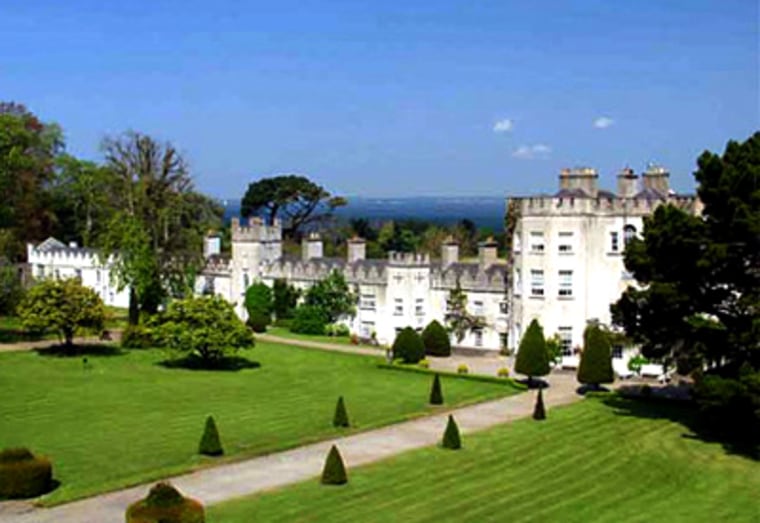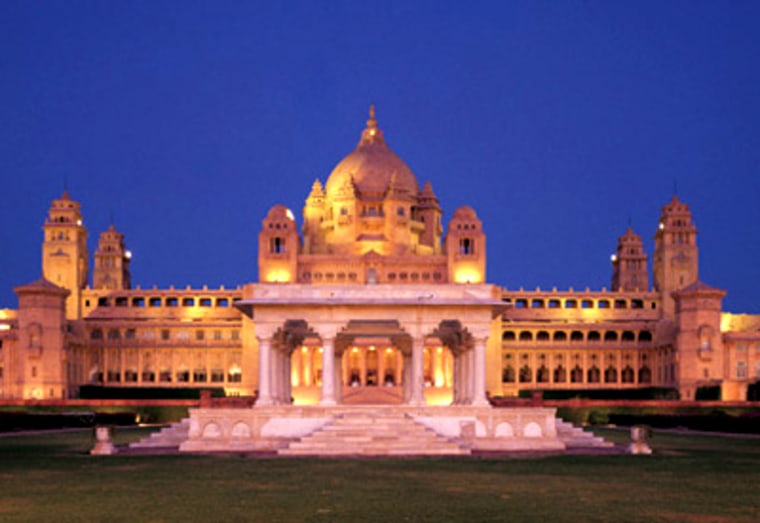The 18th-century castle has a dining room that could easily seat 80, a choice of 20 bedrooms with vintage Oriental carpets and four-poster beds, and a corridor lined with portraits of the current occupant’s ancestors. After exploring the royal residence, you head outside to stroll the formal gardens, try a little clay shooting, and walk several acres with the owner’s dogs. Upon your return, afternoon tea awaits in the drawing room, served on the family’s heirloom silver and brought to you by … what’s this? … a lord?!
Over the last few years, royals who have inherited castles in current or former titled strongholds of nobility like Scotland, Ireland, England, Italy and have decided to open their palatial estates to outsiders. And it’s not just for a tour, as is common with many stately homes. Royals are allowing guests to live in the castle as if they were a member of the family, an image furthered by the fact that they remain in residence because it’s their home, too.
In truth, it’s probably not the royals themselves pouring the tea and carrying the dishes (they do have an image to maintain, after all), but they’re supervising the service and fraternizing with the guests, giving advice on the area and filling them in on the house and family history.
Take, for instance, La Residenza Napoleone III, a sumptuous three-room suite in Palazzo Ruspoli in . Stay here and you’re bound to have some contact with the effervescent Principessa Letizia Ruspoli, who created the suite next to her family’s apartment in the palace. Guests of Glin Castle in County Limerick, Ireland will no doubt encounter Desmond FitzGerald, the 29th Knight of Glin, whose family has owned the land for some 800 years and who still lives in the castle with his family. And House of Stuart descendant Charles Stuart, who restored the 17th-century tower house Stuart Castle near Inverness, Scotland with his wife Elizabeth, still lives there (as do, apparently, several ghosts).
The fact that more nobles allow common folk into their residences these days is usually a matter of simple economics: The upkeep on such mammoth properties is astronomical, and taking in guests can offset the expense. There’s also the reality that in today’s world, most royals don’t need so much space.
“You really can’t live in a house that size … unless you’re Victoria Beckham,” said Felicity Cunliffe-Lister, aka the Baroness Masham. With her husband, Mark, she opened his family’s 30-bedroom castle Swinton Park in England’s North Yorkshire to guests in 2001 after an extensive renovation. The fairytale, partly 17th-century castle with its turreted tower and carved-marble fireplaces is lavishly furnished with antique crystal chandeliers, silk damask wingchairs, a gold-leaf ceiling and a liberal sprinkling of family antiques and portraits. Since they were specifically going after the commercial market, the royals renovated with a spa, a cooking school run by well-known chef Rosemary Shrager, and a four-acre walled garden to provide produce for the estate’s meals.
The Baron and Baroness don’t live there full-time, but they make a point of being at the estate two or three nights a week to greet guests for pre-dinner drinks, and spend weekends on the grounds. And when they’re around, you can count on a good British yarn. “My husband’s great-grandfather was in Churchill’s cabinet, and Willy Whitelaw [Margaret Thatcher’s Deputy Prime Minister] was another politician on his mother’s side, so he has a lot of stories,” said the Baroness.

H.H. Maharaja Sahib of Jodhpur, India has some stories of his own. He lives with his family in one wing of Umaid Bhawan, an opulent 347-room sandstone palace (recently given worldwide publicity as the site of actress Elizabeth Hurley’s wedding), while the rest of the palace and 26 acres of gardens are open to guests. His decision to open the palace, completed in the 1940s as the last great residence of a Maharaja, was similarly due to an overabundance of space for the family’s modern lifestyle. “The palace was built to hold official functions, events and parties,” he said, “so it was ideally suited for the hospitality industry.”
To maximize the palace’s potential, he gave management over to the Taj Hotel group, which also manages palaces-turned-hotels like the in Udaipur and in Jaipur. But the Maharaja and family didn’t move out; they continue to live and hold traditional festivals in their section of the palace, sometimes inviting hotel guests to participate. And he will, with a prior request, meet with guests to tell them about the palace and the family.
But does he ever mind that strangers are tromping through the family digs? He, like the other royals, insists that he doesn’t. “We still see it as our family palace,” he said. And opening it to the public has its advantages, not all of them financial. “This great palace was always intended to be fully utilized, and one can better enjoy it this way. The whole place has come alive again.”
